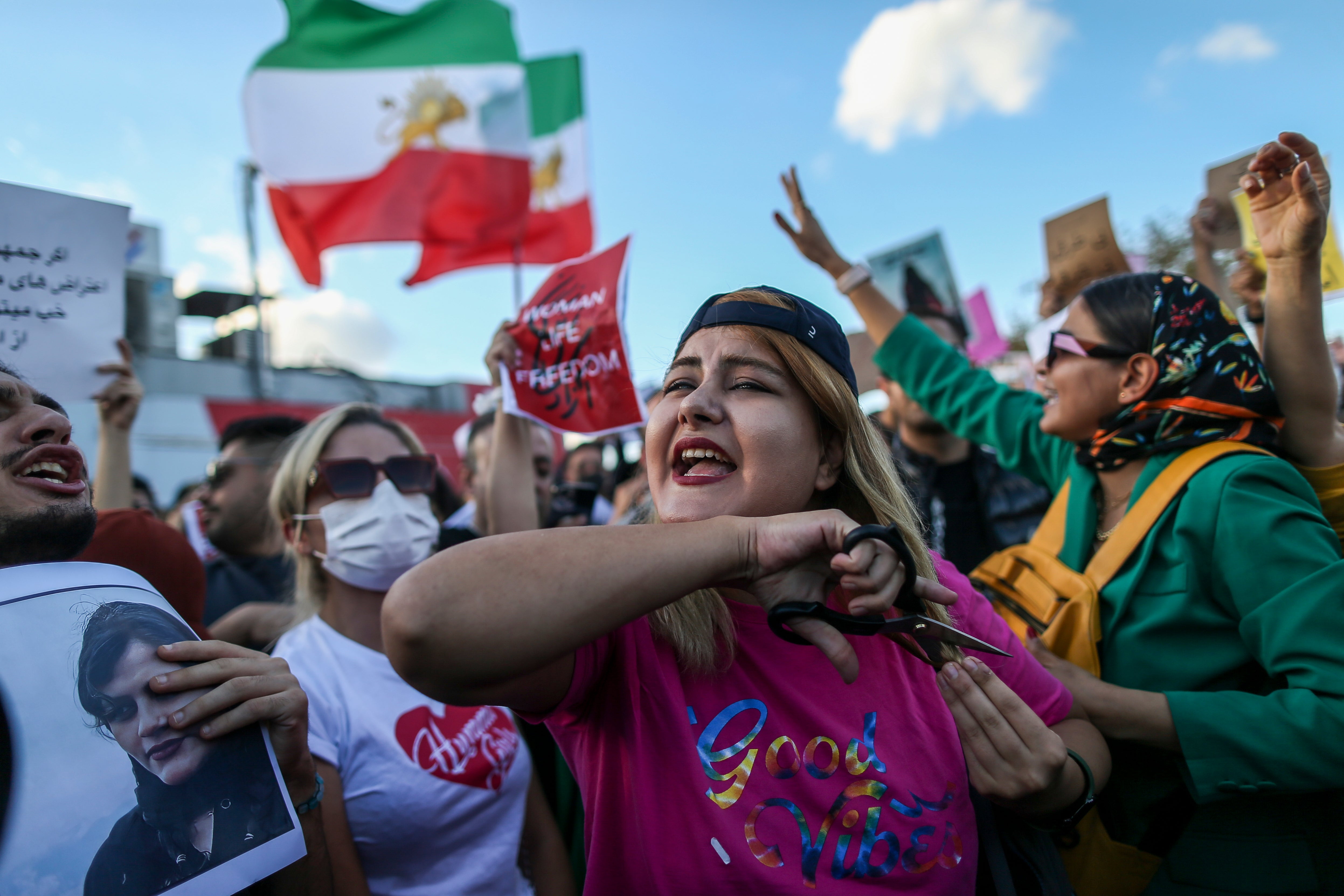Iran state television hacked live on air with image of Ayatollah in flames and crosshair on his head
Footage also shows photos of women who have died in Iran in a month and features a protest hymn
Your support helps us to tell the story
From reproductive rights to climate change to Big Tech, The Independent is on the ground when the story is developing. Whether it's investigating the financials of Elon Musk's pro-Trump PAC or producing our latest documentary, 'The A Word', which shines a light on the American women fighting for reproductive rights, we know how important it is to parse out the facts from the messaging.
At such a critical moment in US history, we need reporters on the ground. Your donation allows us to keep sending journalists to speak to both sides of the story.
The Independent is trusted by Americans across the entire political spectrum. And unlike many other quality news outlets, we choose not to lock Americans out of our reporting and analysis with paywalls. We believe quality journalism should be available to everyone, paid for by those who can afford it.
Your support makes all the difference.An Iranian state broadcaster was briefly hacked during its nightly news programme with a message targeting supreme leader Ali Khamenei, as anti-government protests entered their fourth week.
The newscast on Saturday by the Islamic Republic of Iran News Network (IRINN), which comes under the Islamic Republic of Iran Broadcasting (IRIB) corporation, was interrupted by a group that called itself “Edalate Ali”, which roughly translates to “Ali’s Justice”.
The broadcaster was airing a segment of Ayatollah Khamenei attending a meeting in Bushehr city when it was replaced by roughly 15 seconds of footage which showed a mask against a black background and then an image of Mr Khamenei engulfed with flames and a red-coloured target appearing on his head.
The footage also featured photos of Mahsa Amini, Nika Shahkarami, Hadis Najafi and Sarina Esmaeilzadeh – all of who have died inside a month in Iran.
The captions in the footage read “join us and rise up” and “our youths’ blood is dripping off your paws”, in a reference to the Ayatollah. A song with the lyrics “Woman. Life. Freedom” – a common chant of the protesters – played in the background.
Anti-regime protests erupted in Iran on 17 September after the burial of 22-year-old Mahsa Amini, a Kurdish woman who died in the custody of Iran’s feared morality police.
She was detained for allegedly violating the nation’s stringent Islamic dress codes for women.
Since her death, thousands of women have taken to the streets across the country in protest and resisted a fierce crackdown, in which rights groups said nearly 150 are estimated to have been killed and hundreds arrested.

Two people were reportedly killed in the Kurdish-majority city of Sanandaj as the anti-government protests entered a fourth week. A man was reportedly shot dead by the police while driving a car, while a second protester was killed after security forces fired gunshots to disperse crowds.
Police officers denied using live rounds against the protesters, according to the semi-official Fars news agency.
Iranian president Ebrahim Raisi also faced a stern protest during a meeting with students from the all-female Al-Zahra University in Tehran, where chants of “get lost” reverberated from the corridors.

Protests continued in several universities in Tehran and have also spread into markets, with several shops shuttered in support of the demonstrations.
On Friday, the country’s Forensic Medicine Organisation said Ms Amini did not die as a result of blows to the head and limbs, and instead died from multiple organ failure caused by cerebral hypoxia.

The coroner’s report argued that Ms Amini “suddenly lost consciousness and subsequently fell” while in custody owing to “underlying diseases”, claiming she had taken medication for a disorder in her thyroid and adrenal glands following surgery for a benign brain tumour at the age of eight.
“Due to the ineffective cardio-respiratory resuscitation in the first critical minutes, she suffered severe hypoxia and, as a result, brain damage,” it added.
The report into Ms Amini’s death was released as Iranian authorities denied claims that 16-year-old Sarina Esmaeilzadeh died after being beaten with batons by security forces during the protests, insisting instead that she threw herself from the roof of a five-storey building.

Join our commenting forum
Join thought-provoking conversations, follow other Independent readers and see their replies
Comments